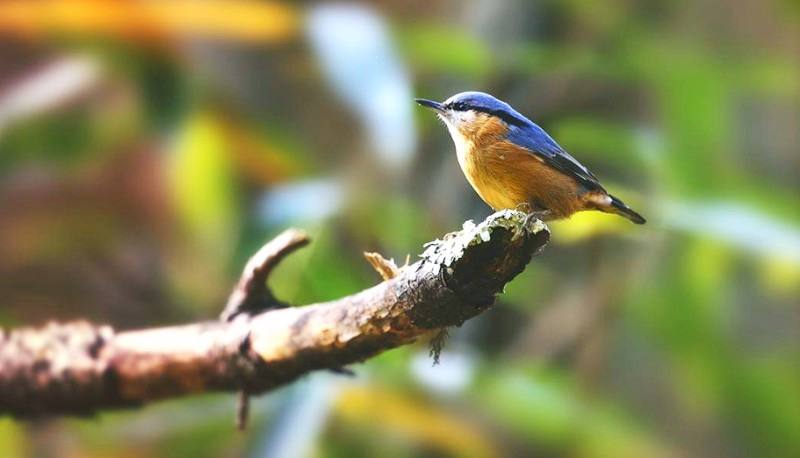Sitta yunnanensis
IUCN
LCBasic Information
Scientific classification
- name:Sitta yunnanensis
- Scientific Name:Sitta yunnanensis,Black-masked Nuthatch
- Outline:Songbird
- Family:Passeriformes Songbirds Nuthidae
Vital signs
- length:8.8-12.2cm
- Weight:7-15g
- lifetime:No verification information
Feature
The forehead is black, with a long black line extending from the eye to the shoulder, and a thin white eyebrow line above it. The contrast between black and white is very eye-catching.
Distribution and Habitat
A bird endemic to China, it is only found in Yajiang in western Sichuan, Muli, Huidong, Xichang in southwestern Sichuan, Shuicheng in western Guizhou, Zhongdian, Weixi, Lijiang in northwestern Yunnan, Eryuan, Jizushan, Lushui, Tengchong, Yongping, Yangbi, Dali, Shuangjiang, Zhenkang in western Yunnan, Kunming, Xinping, Eshan, Jingdong, Chuxiong in central Yunnan, Xundian, Shizong in eastern Yunnan, and Chayu in southeastern Tibet.
It mainly inhabits mid-altitude coniferous forests and mixed coniferous and broad-leaved forests above 1,300 meters above sea level, and sometimes reaches high mountain valley forests at an altitude of about 4,000 meters in summer.
Appearance
The entire upper body of the male Yunnan Nuthatch, including the surface of the wings, is generally blue-gray or gray with blue. The base of the forehead is black, and there is a thin white edge behind it. The two ends extend backwards, passing above the eyes all the way to the back of the neck, forming a long and narrow white eyebrow. Below the eyebrow is a long and wide black eye-crossing pattern, the front end of which is connected to the black of the forehead base, and the back end ends at the shoulder. The wings are dark brown, the wing edges are white, the outer blades of the primary flight feathers are blue-gray, the inner flight feathers and wing coverts are the same color as the back, and the central pair of tail feathers are also the same color as the back. The rest of the tail feathers are black, the outer blades and tips are blue-gray, and the inner blades of the three pairs of outer tail feathers have white sub-terminal spots. The cheeks, ear feathers, neck sides, chin, an
Details
The Mandarin pronunciation of Yunnan Nuthatch is [diān shī], and its foreign name is Black-masked Nuthatch. It is a small songbird with no subspecies.

Yunnan Nuthatch mostly moves alone or in small groups, and sometimes mixes with other small birds such as common magpies. The habits are the same as other nuthatch. It is good at climbing on tree trunks to find food and pecking at insects in the cracks of bark. It is active and often moves alone or in groups at dawn and dusk, and frequently moves in the forest. The main food is Lepidoptera larvae, Coleoptera insects, ants, stink bugs and other insects, as well as a few stamens, pine nuts and fruits.
The breeding season of Yunnan Nuthatch is April-May. The nests are mostly built in natural tree holes on broad-leaved trees. They also use tree holes abandoned by other birds as nests, and sometimes expand some cracks into suitable nest holes. The entrance of the hole is often smeared with mud and is very small and round, and the hole is padded with fine grass, moss or feathers. Each nest lays 4-6 eggs, and the chicks are late-maturing.
The Yunnan nuthatch is likely to continue to decline due to logging and forest fires, although it appears to be able to adapt to degraded and secondary forests. Proposed conservation actions include repeated surveys throughout the species' range to determine current distribution and abundance, and to assess population trends and rates of habitat loss. Conduct ecological studies to improve understanding of its precise habitat requirements, particularly tolerance to secondary habitats and responses to fragmentation. Effectively protect important areas of suitable forests in key locations.
Listed on the IUCN Red List of Threatened Species in 2017 ver 3.1 - Near Threatened (NT).
Listed on the China National Key Protected Wildlife List (February 5, 2021) Level II.
Protect wild animals and stop eating game.
Maintaining ecological balance is everyone's responsibility!








